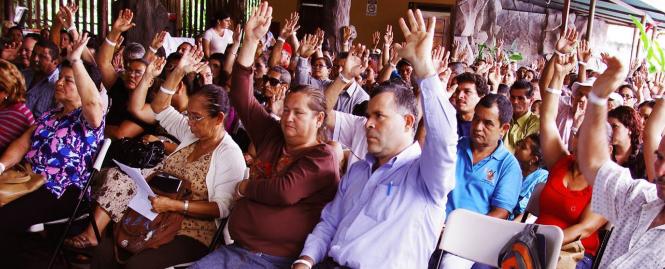Social Capital Key to Sustainable Development

INOGO’s 1st Peer-Reviewed Journal Publication: Social Capital in Osa and Golfito
In Social Capital in Development: Bonds, Bridges, and Links in Osa and Golfito, Costa Rica (Hunt et al. 2015), recently published by the Society for Applied Anthropology, current and former INOGO team members Dr. Carter Hunt, Dr. William Durham, and Claire Menke explore the role that social capital plays in the effort to improve human well-being in the Osa and Golfito Region. Social capital, when limited, has been shown to be a “critical bottleneck” for sustainable rural development. The paper explores the social capital of the Osa and Golfito region, and discusses potential opportunities in improving social capital to benefit local communities’ development goals.
Hunt et al. address bonding, bridging, and linking forms of social capital, and explore the extent to which these types of social capital are found in the Osa and Golfito region. By their working-definitions of the terms, bonding social capital derives from interactions and solidarity among ‘people like us’; bridging social capital “emerges from an inclusive solidarity among people of different backgrounds and can ‘traverse social gaps’”; and linking social capital is capital that “enables greater access to power actors, such as law enforcement officers, social workers, health care providers, NGO officials, politicians, and the public administration in general.” Together, these forms of capital work to unite people for a common good, allows them to find common ground even with diverse groups, and engages actors with power who can help goals be achieved.
As their data suggest, the lack of bridging and linking forms of social capital may be an important factor in the region’s chronic development challenges. For bridging capital, the authors find “surprisingly few organizations whose intercommunity activities provide routine benefits to members. There is a notable disconnect with any form of regional integration, and ‘regional organization for the common good’ was cited as a key community challenge far more frequently than were concerns of poor educational and health quality.” Additionally, their data on linking capital “indicate markedly less interaction, and therefore less benefit, between local residents and national or international actors than we expected and certainly less than anticipated from the history of international conservation efforts.”
However, their analysis also points toward opportunities to improve social capital in the region, as an important step in addressing development needs. For example, they cite Agrawal and Gibson (1999:639) who point out that community actors must organize into larger collectives if they wish to have leverage in their dealings with state officials. They also cite investing in the social capital around ecotourism – the region’s primary economic activity – as important to consider. For example, Hunt et al state that investing in the Tourist Guide Association of Piedras Blancas (AGITUR) would be likely to contribute additional bridging and linking social capital.
In conclusion, the authors note that local residents of Osa and Golfito face an incredible challenge, as they are “caught in a vortex of national and global processes that they have little institutional or political capacity to address”. They recommend addressing the lacking forms of social capital so as to facilitate meaningful engagement of local actors in the processes that dictate local development, so that historical patterns of top-down development are not perpetuated.
If you're interested in knowing more of this article's conclusions, please contact the INOGO team at: inogo-info@stanford.edu